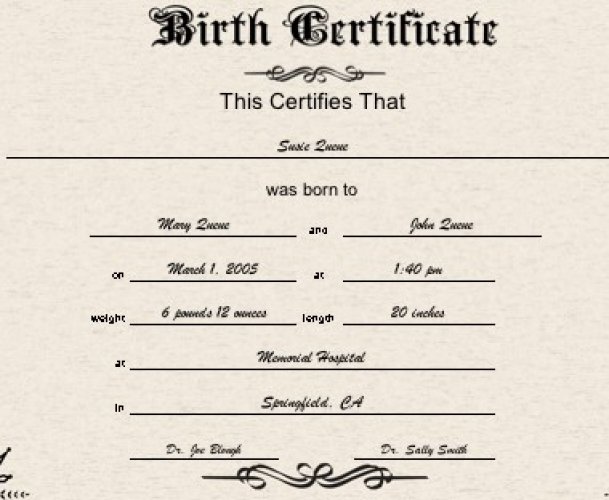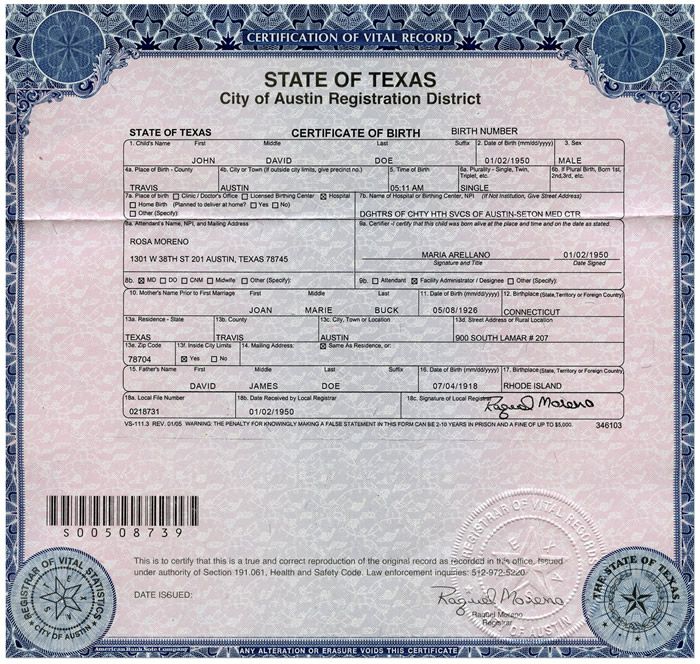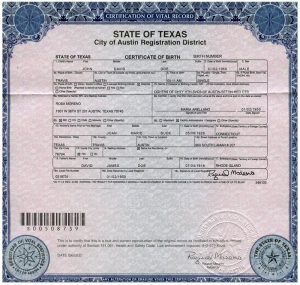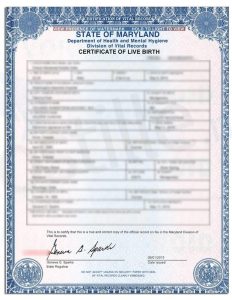The process for obtaining a child’s birth certificate will vary depending on where they were born and whether you choose to apply online or in-person at the vital records office responsible for issuing certificates in that jurisdiction. To start this process, gather all necessary identification documents (e.g., driver’s license) for yourself and any other necessary individuals (such as the child’s other parent) and obtain your child’s birth information, including the date and location of their birth. You may also need additional documents, such as a marriage certificate if you are married and require both parents’ names on the certificate.
Once you have this information, submit an application form, either online or in-person at the appropriate vital records office. There is typically a fee associated with submitting an application, although some states may offer fee waivers for low-income families or other specific circumstances.
Gathering Required Information
Identification documents needed for parents/guardians
In order to obtain a birth certificate for a child, the parents or legal guardians must provide identification documents to prove their relationship with the child. Acceptable identification documents may include a driver’s license, state-issued ID card, passport, or military ID. It is important to note that some states may require two forms of identification from each parent or guardian.
If the parents are divorced or separated, some states may require additional documentation such as court orders or custody agreements to prove who has legal custody of the child. It is recommended to contact the appropriate office ahead of time and inquire about any additional requirements.
Information about the child’s birth (date, location, etc.)
The next step in obtaining a birth certificate for a child is providing information about their birth. This includes their full name at birth, date of birth, place of birth (including hospital name if applicable), and gender.
It is important that all information provided on the application form is accurate and matches any other legal documents associated with the child. If there are any discrepancies in the information provided, it could delay or even prevent obtaining a birth certificate altogether.
Additional documents that may be required (e.g., marriage certificate)
In addition to providing identification and information about the child’s birth, there may be additional documentation required depending on specific circumstances. For example, if the parents were not married at the time of the child’s birth but have since gotten married and wish for both names to appear on the birth certificate, they will need to provide a copy of their marriage certificate.
Other situations that may require additional documentation include adoptions or cases where one parent’s name does not appear on other legal documents associated with the child. It is important to research and inquire about any additional requirements ahead of time to ensure a smooth and efficient process in obtaining a birth certificate for a child.
Determine the Appropriate Office to Obtain the Certificate
The state or country where the child was born
The first step in obtaining a birth certificate for a child is to determine the state or country where they were born. This information is crucial because different states and countries have varying rules and requirements for obtaining birth certificates. For instance, some states may require additional identification documents such as a driver’s license or social security card, while others may not.
Similarly, some countries may require proof of citizenship or residency before issuing a birth certificate. Therefore, it’s important to research the requirements of the state or country before moving forward with an application.
Online or in-person options
Once you’ve determined which office you need to visit, you can then decide whether to apply for the birth certificate online or in-person. Many states now offer online applications for birth certificates, which can be convenient for those who don’t have time to visit a physical office.
However, it’s important to note that online applications may take longer to process than in-person applications due to additional verification processes. Additionally, some states only offer certain types of certificates through their online portals, so be sure to check what options are available before submitting an application.
Contact information for each office
Whether applying online or in-person, it’s important to have contact information readily available for each office that issues birth certificates. This can include phone numbers and email addresses for customer service representatives who can answer any questions you may have throughout the application process.
Many offices also provide detailed instructions on their website regarding how to apply for a birth certificate and what documents are required. It’s recommended that you review these instructions carefully before submitting an application as missing information can delay processing times.
Overall, determining which office you need to visit and whether to apply online or in-person are critical steps when obtaining a birth certificate for a child. By taking the time to research and prepare ahead of time, you can ensure a smooth and efficient application process.
Submitting an Application
Getting a birth certificate for your child requires submitting an application to the appropriate government office. The process of submitting an application involves filling out a form with the required information. In most cases, you will have the choice of either submitting your form online or by mail.
Filling out an application form
The first step in submitting an application for a birth certificate is to fill out the appropriate form. Depending on the state or country where your child was born, you may be able to complete this step online or by mail.
If you choose to fill out a paper-based application, make sure that you print legibly and use black ink. Illegible applications can cause delays in processing time.
What documents do i need to get a birth certificate
When filling out an application form for a birth certificate, it is important to provide accurate and complete information. This includes basic information about yourself (the parent or guardian), such as your full name and contact information.
You will also need to provide details about the child’s birth, such as their full name, date of birth, and place of birth. In addition to this basic information, some applications may require additional documentation or details depending on the specific circumstances surrounding your child’s birth.
How Much Does a Birth Certificate Cost ?
Submitting an application for a birth certificate typically involves paying a fee. The exact amount varies depending on where you are located and whether you choose expedited processing options. In most cases, fees range from $10-$50 per certificate requested.
It’s important to note that if you require multiple copies of your child’s birth certificate, you will need to pay additional fees for each copy requested. Make sure that you have all necessary documentation ready before submitting your application form online or by mail.
Some offices may require original copies of certain documents before they can process your request. You can typically expect to receive your child’s birth certificate within a few weeks of submitting your application, although processing times may be longer if you choose to submit your form by mail.
How Long Does it Take to get a birth certificate
Estimated processing time for obtaining a birth certificate
Once an application for a birth certificate has been submitted, it can take several weeks to obtain the document. The exact processing time will depend on the state or country where the child was born, as well as whether expedited processing options are available. In some cases, it may take up to 12 weeks or more to receive a birth certificate.
It’s important to note that delays can occur if there are errors or missing information on the application form. Double-checking all information before submitting an application can help ensure a smoother process and faster turnaround time.
Expedited processing options (additional fees may apply)
For those who need their child’s birth certificate more quickly, many states offer expedited processing options for an additional fee. This typically involves paying an extra fee on top of the standard cost of obtaining a birth certificate. The exact cost of expedited processing will vary depending on the state or country where the child was born.
Some states also offer different levels of expedited service (e.g., 24-hour vs. 72-hour turnaround time), with higher fees associated with faster service. If you need your child’s birth certificate urgently, be sure to research your state’s specific options for expediting processing and factor in any additional costs when planning.
Delivery options (mail, pick-up in person, etc.)
Once a birth certificate has been processed, there are several delivery options available for receiving the document. Most commonly, certificates are sent via mail to the address provided on the application form.
However, some states also offer pick-up in person at their offices or other designated locations as an option. This can be useful for those who need their child’s birth certificate quickly and want to avoid potential delays with mail delivery.
When submitting an application, be sure to select the delivery option that best suits your needs. Keep in mind that additional fees may apply for certain delivery options (e.g., expedited shipping).
Tips and Considerations When Obtaining a Birth Certificate
Double-Checking All Information Before Submitting an Application
One of the most important tips when obtaining a birth certificate for a child is to double-check all the information before submitting an application. Small errors or typos can lead to delays in processing or even rejection of the application.
Make sure you have all the required information and documents before starting the process, and take your time when filling out the application form. It’s also important to ensure that all information is accurate and up-to-date.
Check that you have correctly spelled names and dates, and that any supporting documents are current (e.g., marriage certificate). Reviewing everything carefully can help avoid any unnecessary delays or complications.
If you need your child’s birth certificate quickly, this could be a good option to consider. However, it’s important to keep in mind that expedited processing still takes time – it’s not instantaneous – so plan accordingly.
Obtaining a birth certificate for your child may seem like a daunting task, but with some preparation and attention to detail, it can be straightforward and relatively hassle-free. By gathering all necessary documents ahead of time, double-checking all information before submitting your application, being aware of any specific requirements or restrictions, and allowing enough time for processing (especially if using standard rather than expedited services), you’ll be well on your way to having your child’s birth certificate in hand. Remember, this is an important document that may be needed for many different purposes throughout your child’s life, so it’s worth taking the time to get it done right, we are here to help.




